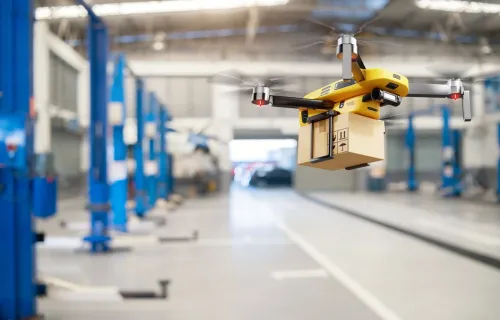In many areas, local authorities are exploring the potential of Smart Place technologies to improve outcomes both for citizens and for the local economy. Most discussion of Smart Place exists in the context of towns and cities, or sometimes wider geographies (indeed some of the hardest challenges and higher costs associated with service delivery present themselves in broader rural contexts). At the other end of the scale, we find Smart Campus – but what exactly is this, and how can it relate to Smart Place in a broader sense?
What is a Smart Campus?
In recent years, the terms Smart Campus and Digital Campus have been used, often interchangeably, by technology vendors and Higher Education institutions (although these can also refer to other types of campus such as business parks and hospitals). Interpretations range from very specific usage to describe Internet of Things (IoT) technologies, all the way through to the full range of digital solutions within a university’s enterprise portfolio.
For the purpose of this article, I will use the term Smart Campus to describe technologies inherently grounded in ‘place’ such as:
- IoT sensors
- The network infrastructure
- Data platforms collecting and processing information from the devices
- Tools enabling hybrid (physical/virtual) collaboration
However, this is not to suggest that smart campus solutions should be considered in isolation; quite the opposite. Integration with the wider digital landscape is essential in order to enable value chain creation across all facets of the university’s operation.
Smart Campus use cases
Data from the IoT devices is processed within a central data platform (although in some cases can also be processed at ‘the edge’ within the device itself). This supports use cases ranging from short term reactive measures (turning off lights in an empty room), via advanced analytics (analysing trends in usage and behaviour over time), all the way through to sophisticated Digital Twin models of the physical environment which enable multiple ‘what if’ scenarios to be modelled.
This data is an enabler for greater insight, efficiency, sustainability and improved outcomes for staff and students. Typical use cases cover areas such as:
- Safety, security and wellbeing of students and staff
- Improved engagement and educational attainment through more immersive and supportive learning environments
- Efficient utilisation of real estate, monitoring occupancy levels in real time and reacting to changing behaviours over the longer term
- Improved accessibility, including wayfinding and digital signage
- Energy efficiency encompassing aspects such as heating, lighting, device management
- Smarter facilities management and proactive maintenance.
Scaling up
The Smart Campus approach has tremendous value in and of itself – but it can also represent an effective microcosm of a wider Smart Place.
Within the bounds of the campus we find many features of a typical village or town, albeit on a smaller scale. Retail and leisure outlets exist alongside accommodation, teaching and learning spaces, all connected of course by roads, car parks, and active travel routes. They therefore represent an excellent proving ground for Smart Place technologies, enabling these to be trialled and studied at a small scale prior to scaling up to wider areas.
Some potential areas to explore could include:
- Collaboration with local authorities to trial and observe the use of Smart Place technology at a smaller scale before deployment to the wider area
- Private sector-funded research into innovative use of smart technology, using environments on-campus as a living laboratory
- Exploring the potential of data as an asset, extrapolating how observed behaviour may relate to Smart Place scenarios
- Specific Computer Science modules offering hands-on experience of Smart Place technology and data science
- Fostering Small and Medium Enterprises, making space available to collaborate on smart technology innovation.
The campus may be small, but the opportunity for universities and their partners is huge.
Originally posted on techUK as part of their #DigitalPlace week https://www.techuk.org/resource/cgi-small-place-huge-potential-the-role-of-smart-campus-as-a-proving-ground-for-smart-place-innovation.html






